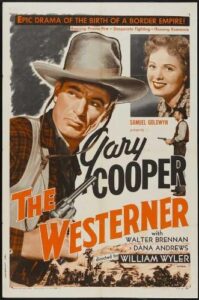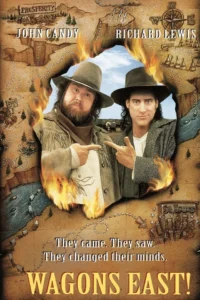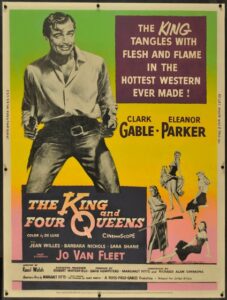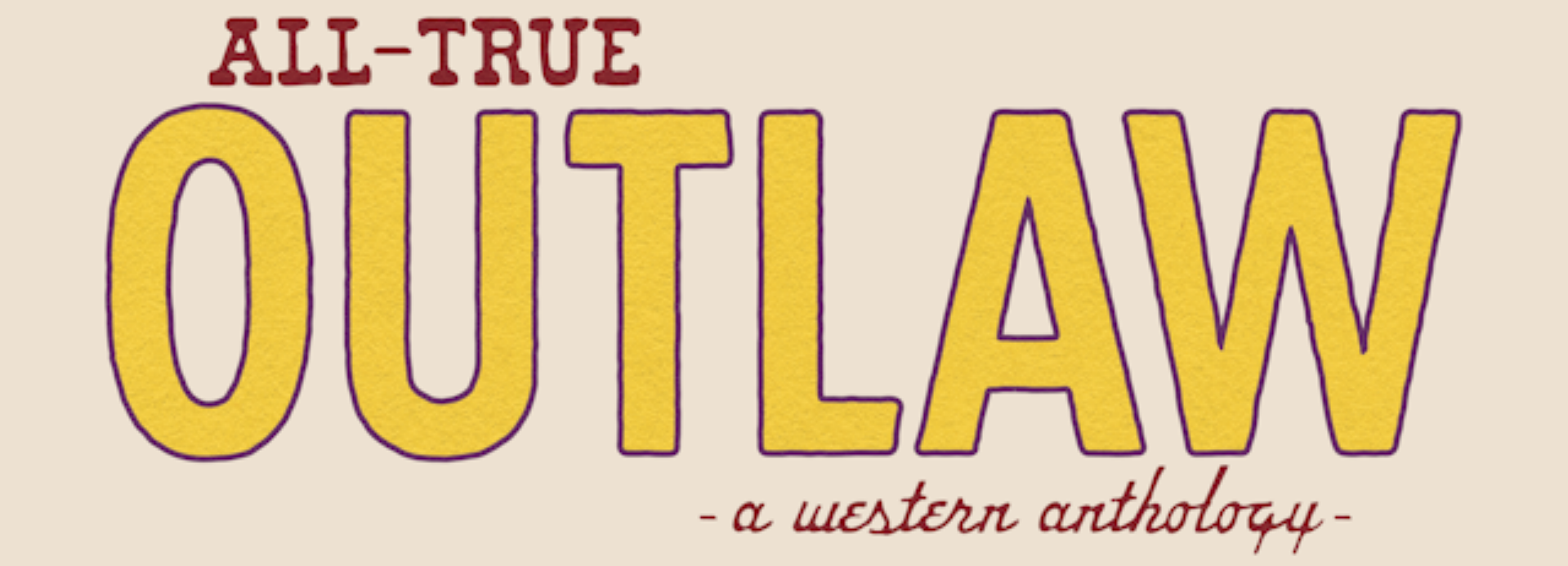Ayy All-Truers,
Welcome to the fifth go-around of Project: 100 Westerns, in which I will watch 100 Westerns and provide thoughts on them. By now, if you’re doing any type of quick math, you can see I’m woefully short of hitting the one year goal. Whoopsie, that’s life! 😎
On to the next four movies:
#16. Chino (1973)

“What a man says and what a man does doesn’t always end up being the same thing.”
In this Charles Bronson-led film, a horse tamer living in solitude has his life upended when a young man named Jamie (Vincent Van Patten), and later, a woman named Catherine (Jill Ireland), intrude on his daily dealings, eventually forcing him into situations that rattle his uncomplicated existence.
Aside from a couple of awesome fights with above-average choreography (Bronson could move, man), and the obligatory shootout at the end, this is one sleepy, listless movie. Based on the novel The Valdez Horses (also the title presented at the start of the English version of this film) by Lee Hoffman, the events that take place center on the everyday happenings of a man and his lonely horse breeding operation. The plot opens with Jamie wandering in and squeaking his way into a job as ranch hand, and the viewer (this one, at least) understands the story to be that of an uneasy alliance between a hardened man and bright-eyed boy. The two acclimate with each other quickly, Chino delivering the hard lessons and Jamie teaching the elder man how to enjoy life again.
This dynamic carries the movie part of the way, but is mostly forgotten once Catherine enters the picture. The sister of the nefarious town boss, Maral, she adheres to Chino despite his gruff demeanor and seemingly apathetic posture. It’s pretty typical Western stuff from there, but there’s a certain chemistry that doesn’t quite manifest despite the script, actors and soundtrack trying to make it work. It seems that the romance element may have been punched up a little because of Bronson and Ireland’s real life vows.
The one-two punch of Jamie and Catherine feel like they were thrown by different people at different times of the day. Their presence in the story represent similar themes to the title character but since the two don’t really interact, nor have similar plot concerns, they work against each other, ultimately.
Eventually, Maral’s ire reaches an action point and he threatens Chino to stay away from his sister, then to eventually leave town, or else. Being a man of hard principles and honor, Chino initially balks at this idea, his ardent independence not allowing him to be bullied, but once he sees the violence on the horizon, and his inability to deter it, he, surprisingly, decides to free his horses, shoo Jamie away and burn his cabin to ash. It’s a bit of a reversal of what we’d expect from the genre, but slots right into the “revisionist” era. The West is not a place of justice and hard virtue, but rather chaos and compromise. Chino flees while still drawing breath and preserves the lives of the two people who matter most to him. It’s a bold ending, but sad and more than a little muddled.
All in all, the movie is OK. No idea how it’s rated PG with the flashes of horse cock, and a rape-y sort of first hook-up between Chino and Catherine, but it’s got an appeal in the somber, relaxed mood it gives off. I just wish the focus was a little tighter, there’s something the film is trying to say but voices it in a hoarse (hah) whisper.
#17. The Westerner (1940)

“By Gobs!”
Within the first ten minutes of this movie, Walter Brennan will have you clenching your jaw and shaking your head.
Playing the infamous “Judge” Roy Bean, the self-appointed “law” of small-town Texas, Brennan presents the audience with an immediately unlikable, yet inexplicably endearing, antagonist. Bean is a nasty guy, causing damage under the guise of righteousness and shared values, yet he hits the notes of common man charisma you’d expect from the endearing hick-ish sidekick. Before we even meet the main character, Bean is already sentencing a man to hang for mere acts of survival and self-preservation. His power and sway are apparent, and it makes for an insurmountable problem from the jump.
When Cole Harden (possibly the most Western name ever?) is dragged into Vinegaroon for alleged horse theft, Bean is quick with his gun-gavel and sentences the stranger to death under the guise of peacekeeping and moral tenacity. He cares not for evidence or doubt, but rather works to maintain a contrived status quo. Most notably, he’s cheered every step of the way by a village of cronies and goons.
He of the Type Strong and Silent, Gary Cooper, plays Cole with a directness that bounces off of Brennan really well. He’s the standard drifter type – nothing holding him down to any place or purpose, but his sense of justice peeks out every once in a while. Understanding that he’s down to his last verbal bullets, Cole coerces Bean into a friendship over the shared admiration of (real-life) starlet Lillie Langtry, which unfolds a whole other set of plot dramatics.
One thing I find interesting about films of yesteryear is the sort of disjointed talent and production levels in any given picture. Like, you can feel Hollywood learning and evolving as it goes along. Specific to this film, Walter Brennan is so good that the acting abilities of others, or lack thereof, become glaring. Cooper is fine, he always sort of plays it straight, retreating into an everyman style that obviously worked for him over a long career, but some of the day player types are perpetrators of over or underacting. It doesn’t detract from the film too much, however.
A few other things work against the movie, as a whole. The depiction of Roy Bean is fun but does not align too ardently to the real life man. I certainly think a pastiche would have been an adequate replacement. While the plot has some good turns (i.e. the push/pull of the relationship between the two leads) the central conflict of homesteaders vs cattlemen is a big whatever. The final scene too, which sort of lionizes the villain in a way that’s unearned, feels off kilter and driven by a misplaced nostalgia of the West and its imperfect ways.
Still, I’m sort of surprised this movie isn’t talked about a little more with other classics of the era. In my view, Brennan’s Oscar-winning performance makes it an essential part of the early-Western catalogue.
#18. Wagons East! (1994)

Last month, I watched Almost Heroes, the Chris Farley-driven explorer comedy set during the 1800s. When I browsing Prime for that movie, Wagons East! was suggested right along with it, and I softly marveled at the similarities between the two. Beyond the similar setting, both starred comedic giants in their final acting role, featured foppish co-leads, and are generally considered failures, both financially and critically.
That said, this movie has a 0% on Rotten Tomatoes. I know that review aggregators isn’t gospel, but jeez, its a deal better than Almost Heroes.
Richard Lewis stars as Phil, a former war doc who, with others, are flat exhausted by the West and the turmoil it brings. He, along with other characters played by (the Doctor) Robert Picardo and (Dr. Cox) John C. McGinley, decide to take the unconventional route of going against the flow of traffic and returning to civilization. The move is presented as ironic, which it is in the context of Western films, but you have to think that sort of thing happened all the time.
The group hires the drunken and disheveled James Harlow (John Candy) to lead them back to Saint Louis. That’s sort of contrived impetus for the plot, I’m not saying the roads are clearly marked but you’d think going back to civilization wouldn’t require a whole ass guide. Predictably, Harlow, much like Bartholomew Hunt from Almost Heroes, is far from a competent leader and hijinks ensue.
The movie suffers from a lot of the same ills of it’s cousin-movie. The jokes are often too stupid to solicit more than a chuckle and it deals too heavily in tropes and typecasts to be considered daring. Still, it works way better than its counterpart, actually attempting to deliver on character arcs and even giving us a capable antagonist or two to impede the protagonists from time to time.
I didn’t hate Wagons East!, it’s got a good cast and is earnest in it’s attempt to entertain, but given that Candy died in the throes of production there’s a wisp of melancholy in the cinematic ether. Fire this one up if you’re bored and looking for some that mid-90s vibe, but be warned of the tinge of sadness it may produce between the quips and arrows.
#19. The King and Four Queens (1956)

I love the way “thirst” manifests itself in older movies.
This film could be alternately titled “Down Bad Ranch” with its plotline of a charming older man sauntering into a remote homestead with four man-deprived widows all vying for his attention. Clark Gable is Dan Kehoe, a wandering con man who discovers via town gossip that a huge sum of gold is buried somewhere on the McDade property. Apparently, the four McDade brothers secured the treasure from a robbery, but rumor and conjecture claims three were killed in the resulting skirmish with the law, with one escaping and now MIA.
As an unknown McDade sibling is possibly still alive, the four wives of the brothers (played by Eleanor Parker, Jean Willes, Barbara Nichols & Sara Shane) are sort of in a Schrödinger’s Widow situation — any of them could still be married and thus are obligated to wait around until the missing brother returns. Thus, the harsh and protective Ma McDade (Jo Van Fleet) is immediately skeptical of Kehoe when he wanders onto the estate, and keeps a steady eye on his movements throughout the film.
The King and Four Queens does that typical Golden Age Western thing where the roguish lead is presented as a dashing black knight, rather than the antihero-with-a-redemption-sidecar type. Even though we’re told Kehoe is a bit of a thief and swindler, nothing negative comes about from that lifestyle, and Gable plays him like an imperfectly perfect gentleman. This lack of consequence prevents actual drama from happening in the film, and the thin plot reflects that. A huge portion of this movie is cute banter and some physicality between Kehoe and each of the sisters, but ultimately a lot of that positioning and intrigue goes nowhere.
There’s a sense something is missing from this film, and according to IMDb, scenes with the missing McDade brother were cut from the final version. The viewer feels that omission, the script alludes to that dangling mystery more than a few times yet decides to resolve it with an alternate turn during the final moments. An additional antagonist would have pushed the tension greatly but instead this venture sort of meanders and ends abruptly.
What we get is in the end is a lighthearted movie that feels like a minor missed opportunity. The performances are adequate and it’s shot well enough, however the lesson I take from this one is that it’s pretty hard to make a great movie, even if many of the components work on their own.
Four more movies down! I’m enjoying myself and learning a good bit about the Western genre and the movie-making machine.
Check back on May 5th, 2025 as we premiere another All-True comic, a must-see for fans of the steed.
Westward!
~Jamil

